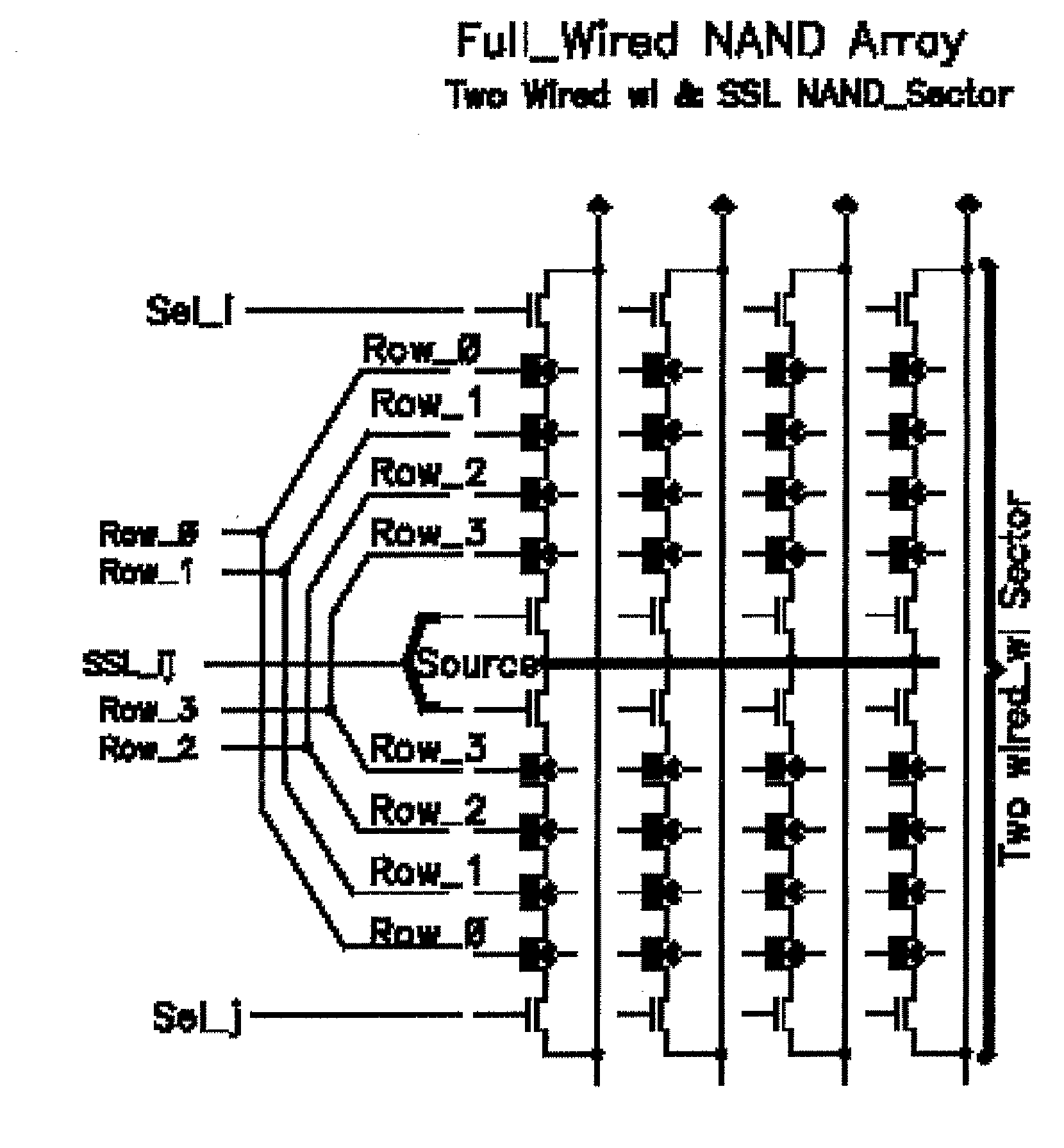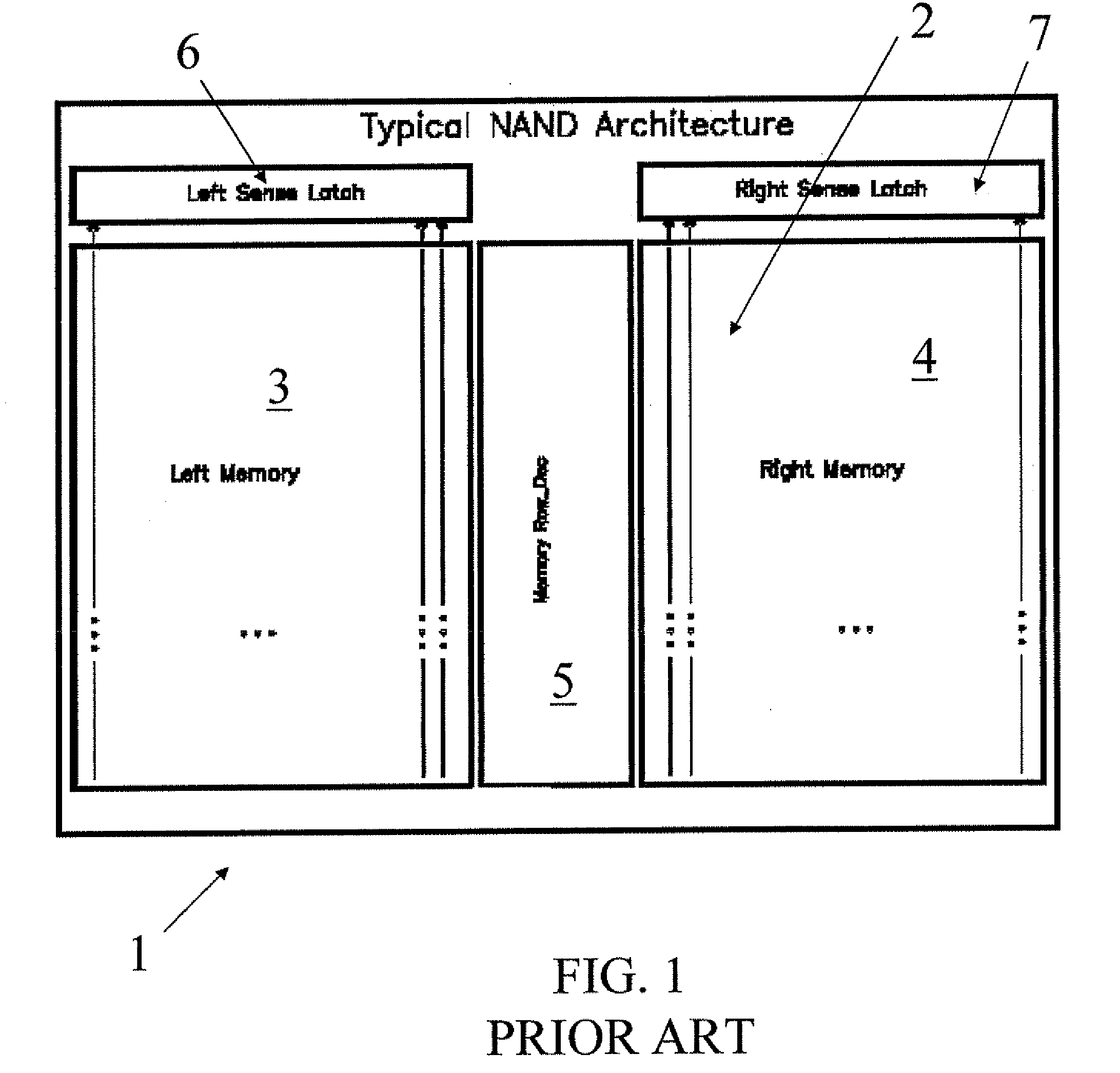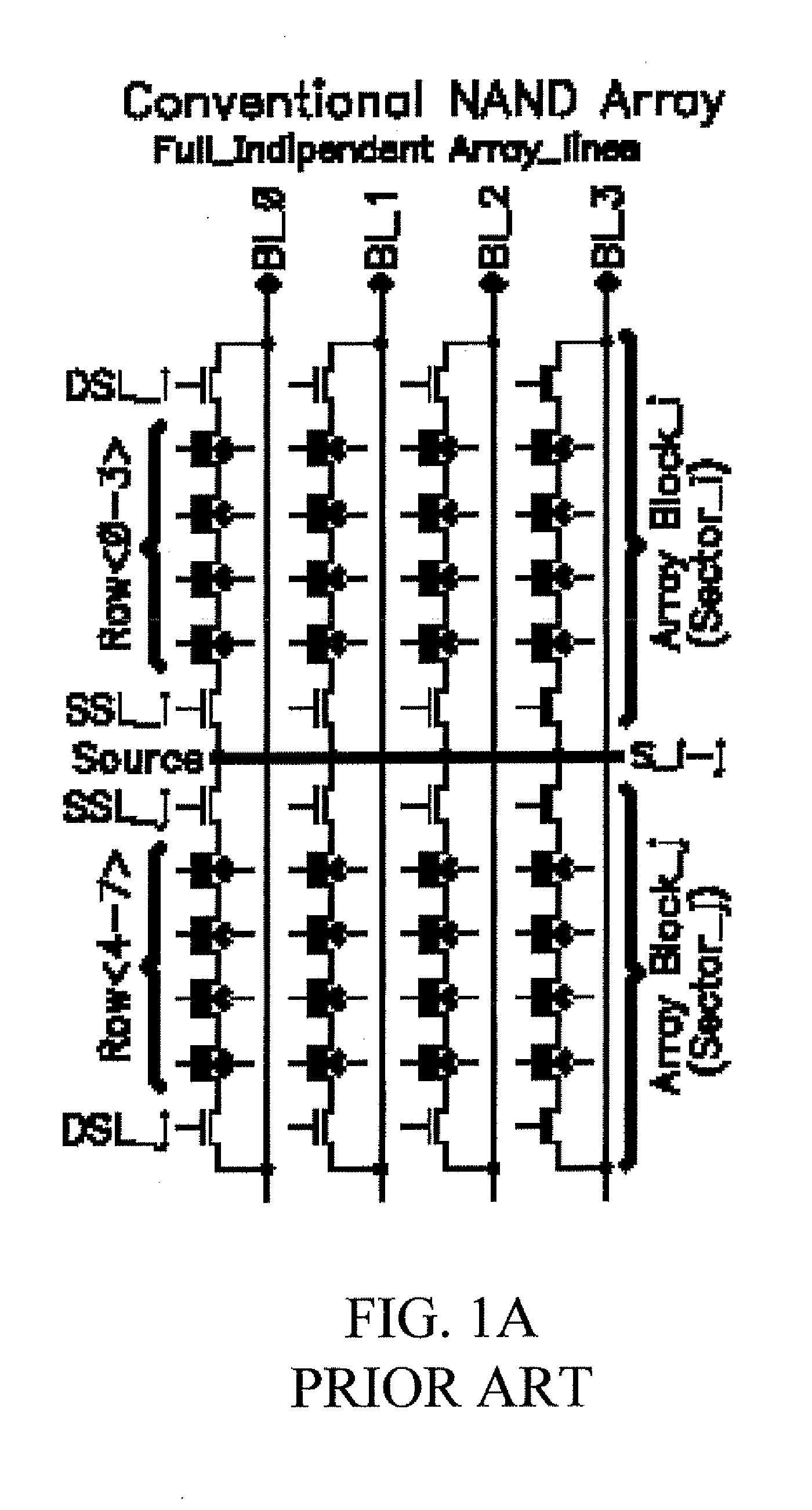Integrated electronic non volatile memory device having NAND structure
a non-volatile memory, integrated technology, applied in static storage, digital storage, instruments, etc., can solve the problems of serious difficulties in acceding to a sector, nand memory does not allow a fast random access to the same, and the nand access protocol is quite slow in random access, so as to achieve the effect of minimizing the cell network
- Summary
- Abstract
- Description
- Claims
- Application Information
AI Technical Summary
Benefits of technology
Problems solved by technology
Method used
Image
Examples
Embodiment Construction
[0060] With reference to the Figures, and in particular to the example of FIG. 2, a memory electronic device realized according to the present invention and monolithically integrated on semiconductor is globally and schematically indicated at 20.
[0061] The device 20 incorporates at least one matrix 21 of memory cells organized in rows or word lines WL and columns or bit lines BL. The device 20 is however a memory of the Flash EEPROM type with a NAND architecture. FIGS. 6 and 8 show instead two possible implementations of the array relative to the fast sections 23a and 24a of Flash EEPROM memory with NAND architecture of the device 20.
[0062] The memory allows, to the expense of a slight modification of the array of a NAND memory, to realize in a single chip, and thus with a single technology, a group of functions being typical of different memories and up to now obtained only by way of devices of different nature and structure. In other words, the device 20 is realized on a single ...
PUM
| Property | Measurement | Unit |
|---|---|---|
| random access time | aaaaa | aaaaa |
| random access time | aaaaa | aaaaa |
| random access time | aaaaa | aaaaa |
Abstract
Description
Claims
Application Information
 Login to View More
Login to View More - R&D
- Intellectual Property
- Life Sciences
- Materials
- Tech Scout
- Unparalleled Data Quality
- Higher Quality Content
- 60% Fewer Hallucinations
Browse by: Latest US Patents, China's latest patents, Technical Efficacy Thesaurus, Application Domain, Technology Topic, Popular Technical Reports.
© 2025 PatSnap. All rights reserved.Legal|Privacy policy|Modern Slavery Act Transparency Statement|Sitemap|About US| Contact US: help@patsnap.com



